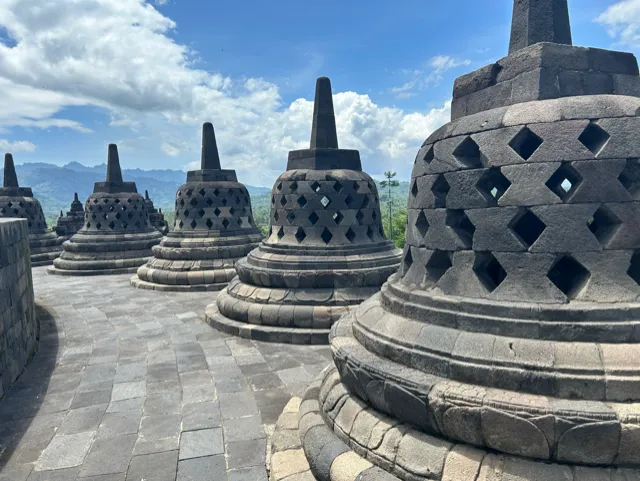A train trip in Indonesia just a short flight from Melbourne

While Australians flock to Europe's railways for grand adventures, an equally impressive rail experience lies just a quick flight from Melbourne. Indonesia's Java Island, better known to most for its bustling cities and ancient temples, is quietly revolutionising its rail service with luxury trains that rival Europe's best.
"Australian?" says the suited attendant with a smile as she serves me coffee in the executive lounge of Surabaya's colonial-era railway station. I'm waiting to board the panoramic train service (pictured above) to Bandung, a journey that will take me through the heart of Java.

The station itself shatters preconceptions about Indonesian infrastructure. Recently renovated, it boasts digital tickets, modern amenities, and a neat and tidy atmosphere that wouldn't be out of place in Japan or Switzerland. It's a far cry from the motorcycle madness many associate with Indonesian transport just outside the station gates.
The panoramic carriage (pictured above), where I'm headed, is Indonesia's nod to the golden era of railway travel. Expansive windows frame the passing landscape, while plush reclining seats beat business class air travel with ample leg room. The service includes trendy coffee, hot chocolate, and full meals – all while gliding past rice paddies and volcanic landscapes at a pleasant 120 kilometres per hour.

The journey's highlight is the stop at Yogyakarta, where savvy travellers can break up their journey to visit two UNESCO World Heritage sites. Within an hour of leaving your luggage at the station's modern storage facility, you can be exploring the mind blowing Prambanan Temple complex (pictured below) or Borobudur Temple (pictured above). It's a surreal experience: beautiful monuments without the crowds you'd expect in similar European locations, made lively by high schoolers on their annual trip.
My fellow passengers in the panoramic carriage challenge stereotypes too. Well-heeled Indonesian professionals choose dependable comfort over the labour of flying, while Singaporean families seek escape from their city-state's confines in Java's sprawling landscapes. "In Singapore, everything feels too close," one passenger tells me. "You have to get out. Here, you can breathe."

The journey concludes in Bandung, a city that perfectly embodies Indonesia's blend of historical significance and modern ambition. The art deco Savoy Homann Hotel (pictured below), with its distinctive curved facade, stands as a testament to the city's role in shaping Asia’s history. It was here during the 1956 Asia-Africa Non-Alignment Conference that leaders like Sukarno, Ho Chi Minh, and Zhou Enlai gathered to forge a new path globally for the then newly independent nations such as Indonesia.
Today's Bandung offers multiple onward adventures. You can get a taste of the future of Indonesian rail by jumping on the Whoosh bullet train to Jakarta, or head into the volcanic highlands where tea plantations and hot springs await. The hill country, with its Dutch colonial architecture and cool climate, provides a perfect counterpoint to the warmer climes of Yogyakarta.

The Indonesia is clearly betting big on rail, positioning it as a sophisticated alternative to domestic flight that doesn’t break the bank. For Australians looking for luxury train experiences, the colonial-era hotels near major stations provide an atmospheric extra at a fraction of European prices. Pivotal moments of the Battle of Surabaya, for instance, played out in and around the five-star Majaphit Hotel, only 10 mins taxi from Surabaya Train Station.
This isn't the Indonesia most Australians know – and that's precisely what makes it special. While we often dream of rail adventures departing from London and Berlin, half a world away, one of Asia's great rail journeys is hiding in plain sight, just a short few hours’ flight from home.
